Packaging machine is an indispensable equipment in the production and processing of organic fertilizer. Judging from the sales and use of full-automatic packaging machines in the current market, it can be proved that the development of fertilizer packaging machines has been recognized by many fertilizer enterprises.
Of course, the strength of production enterprises in this field is also an important factor whether the development of automatic packaging machine can achieve the current achievements. Fertilizer packaging machine provides the most basic guarantee for the technical improvement of organic fertilizer production process, so as to have high-quality organic fertilizer products.
Whether it is the screened compost powder or the organic fertilizer particles processed by the fertilizer granulator, the operator only needs to put the bags into the bags one by one and take out part of the equipment at one time. The mechanical grab of the equipment will automatically take out the bag, print the date, open the bag, Send a signal to the measuring device, measure the blanking and seal the output.
Customers can also add detailed functions such as emergency stop, automatic card entry, abnormal discharge and so on according to the packaging requirements of organic fertilizer products. The whole process of organic fertilizer machine packaging does not need manual operation, which effectively improves the production efficiency of chemical fertilizer enterprises and saves labor costs. Administrative expenses have greatly reduced costs.
Tag: fertilizer production plant
Bio-organic fertilizer production projects solutions
1. The use of animal manure to produce bio-organic fertilizer. Livestock and poultry manure is rich in organic fertilizer and also contains a certain amount of nitrogen. Nutrients such as phosphorus and potassium required for plant growth are high-quality raw materials for the production of bio-organic fertilizers.
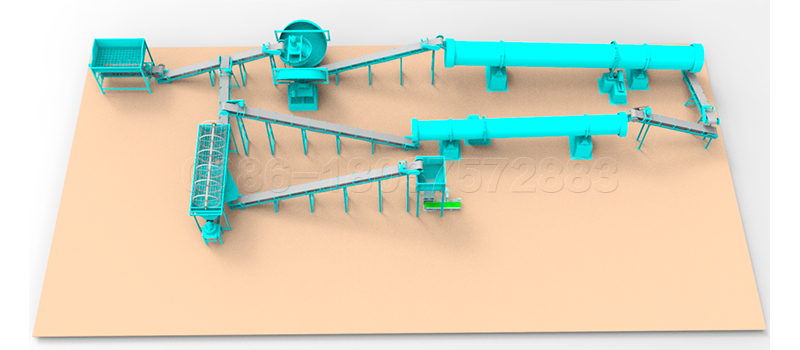
In the process of making bio-organic fertilizers, the dry-wet ratio and carbon-nitrogen ratio are adjusted by peat and rice bran. Add peat and rice bran to livestock and poultry manure, adjust the humidity of the material to about 50%, remove non-fermentable debris such as chicken manure, and the width is 2m, which is suitable for production. After fermentation, it is dried and crushed, and then sifted out of the debris. Disc granulators are used for granulation, packaging bio-organic fertilizers.
2. The bio-fertilizer project uses organic waste to produce bio-organic fertilizer. Organic waste refers to the garbage containing material components in urban and rural household garbage, mainly including crop straw, fiber, bamboo, waste paper, kitchen waste, etc. If this organic waste is not treated in time, it will become a source of pollution in the city. Environment, such as odor emissions, disease transmission, water pollution, etc.
Therefore, it is necessary to apply organic fertilizer scientifically and rationally. It makes up for the shortage of nitrogen, phosphorus and potassium fertilizer manufacturing process products. It can not only avoid the adverse consequences caused by self-accumulation and decomposition, but also significantly reduce the pollution caused by the application of a large number of chemical fertilizers to the environment.
After the pretreatment of organic waste, straw is added to adjust the C/N ratio of organic waste, and then the moisture content of the wastewater is adjusted, and the rapid composting compound bacterial agent is inoculated, high temperature fermentation, and medium temperature drying temperature.
In terms of equipment required for biofertilizer production, the decomposed materials need to be granulated with a fertilizer granulator. It can be made into bio-organic fertilizer after further drying, sieving and packaging.
More detailed info, welcome go to https://organicfertilizerplants.com/
Bio fertilizer production what machines can be used for
The organic fertilizer flat mold granulator adopts microbial fermentation technology to produce deodorized, sterile, high fertilizer efficiency, non root burning and non seedling burning organic fertilizer from livestock and poultry feces, urban garbage and other feces.
This machine is used for grain fields, fruits, vegetables and flowers. It is applicable to the technical transformation of organic fertilizer production line in new plant or original compound fertilizer plant.
Main performance characteristics of organic fertilizer flat mold granulator
The press roll of this machine adopts inclined wheel. The speed of both ends of the template is the same as that of the inner and outer ring of the template, there is no dislocation friction between the wheel and the mold, the resistance is reduced, the kinetic energy loss is reduced, and the service life of the mold is prolonged.
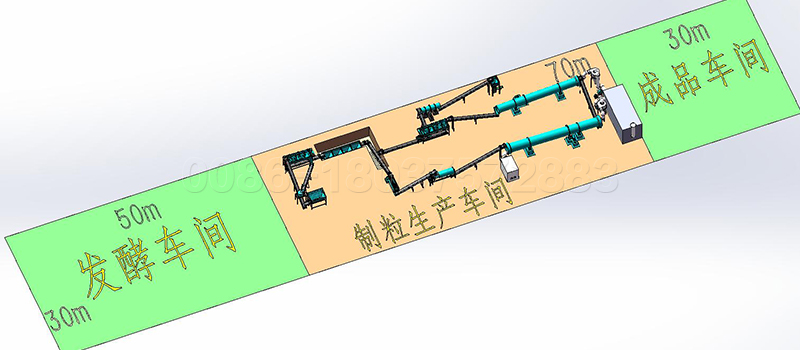
This is the main difference from similar die equipment. At the same time, the technology adopted by organic fertilizer granulator is the most advanced technology today. The press rollers of the flat molding granulator are evenly arranged and run smoothly, eliminating the easy feeding of the ordinary flat molding roller.
The organic fertilizer flat mold granulator adopts the central pressure regulating structure to adapt to different materials and ensure the pressing effect. The pressing die of sawdust and corn straw needs a lot of pressure. Among the similar granulation equipment, the drum part is the core part of the whole equipment.
The use of high-quality alloy steel improves the service life of the drum of organic fertilizer granulator.
The bio organic fertilizer flat molding granulator is equipped with a suitable pelletizer on the basis of the fertilizer granulator, so that the cylindrical particles can form balls at one time without returning particles, with high granulation rate, good strength, beautiful and applicable. It is an ideal equipment for biological fertilizer granulation.
More detailed info, welcome go to https://fertilizerplantequiment.com/in-vessel-composting-equipment/
Detailed Process on Pig Manure Fertilizer Production
Pig manure is a good organic fertilizer, which contains a large amount of nitrogen, phosphorus and potassium required for plant growth. It is suitable for plant growth and can improve the yield of food crops. Using pig manure to produce organic fertilizer is a way to change pig manure.
The pig manure organic fertilizer production line has made a breakthrough in the harmless and resource reuse of pig manure. The complete set of equipment for making organic fertilizer from pig manure makes pig manure become organic fertilizer, which solves the long-standing problem that pig manure is difficult to recycle and seriously pollutes the environment.

Pig manure organic fertilizer production line
The process flow of pig manure organic fertilizer equipment production line is slightly more complex than NPK fertilizer manufacturing process. Raw materials need to be fermented first and then granulated.
1. Raw material fermentation.
2. Automatic batching by computer belt scale.
3. Crushing and mixing.
4. Granulation for pig manure production.
5. Organic fertilizer granules are dried with a dryer.
6. The organic fertilizer particles are cooled by a cooler.
7. Qualified organic fertilizer particles are screened out by screening machine.
8. Coater film particles, smoother.
9. Automatic filling and sealing of organic fertilizer particle packaging scale.
More details on turning pig manure into fertilizer, welcome go to https://manuretofertilizer.com/pig-manure-management/
Quality Bio Fertilizer Production Tips
The production equipment of biological fertilizer project mainly includes fermentation part and granulation part. Even if organic fertilizer raw materials are well fermented, granulation is difficult, because organic raw materials are characterized by rough raw materials, light weight and low binding rate.

Different organic raw materials have different characteristics, so special care should be taken when selecting equipment, otherwise it will not only affect the output, but also the appearance of the product can not meet the requirements.
The bio organic fertilizer production line includes main equipment:
1. New type organic fertilizer granulator: designed and manufactured by the new process of wet continuous granulation. The machine can not only granulate a variety of organic materials, especially coarse fiber materials that are difficult to granulate by conventional equipment.
2. Tipping machine: used for tipping and composting to improve fermentation speed and quality.
3. Horizontal mixer: this series of horizontal mixer is a new generation of mixing equipment developed by our company. High mixing degree and low residue, suitable for the mixing of organic and inorganic fertilizers.
4. Conveyor: it is suitable for conveying loose materials or box items in coal, metallurgy, mining, chemical industry, building materials, wharf, warehouse and construction site, especially in chemical fertilizer plant, cement plant and other environments.
5. Packaging scale: the packaging scale is mainly composed of automatic quantitative packaging scale (composed of storage hopper, feeder, weighing bag hopper, pressing mechanism, computer control, pneumatic actuator, etc.) and optional items (conveyor, sewing machine, etc.)/ Heat sealing machine).
There are several key factors to pay attention to in the selection of equipment: fermentation mode, organic raw materials, degree of mechanization and annual output. The quality of organic fertilizer depends on the fermentation site and the formula of the product.
The key factors of fermentation are: microorganism, carbon nitrogen ratio, carbon phosphorus ratio, water, pH value and aeration control. If a factor is not well controlled, it will cause incomplete fermentation, incomplete fermentation or too long fermentation time.
The formula of organic-inorganic compound fertilizer is the same as that of inorganic fertilizer. It also depends on different soils and different crop formulations. If the fermentation is properly prepared, the effect is better than inorganic fertilizer and the cost is low. As a green fertilizer, it can also improve the environment of plant survival and soil granulation.
More detailed info on bio fertilizer production, go to https://organicfertilizerplants.com/
Latest Technology for Bio Fertilizer Production
The technical content of biological fertilizer project is high. In addition to the biological agents that promote the maturation and decomposition of organic matter in the maturation process, in order to achieve targeted maturation and deodorization, microbial products with specific functions need to be added to enhance the effect of the products.
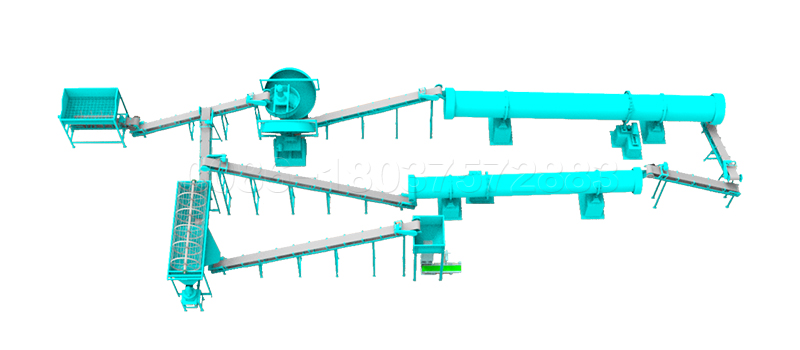
At present, bio organic fertilizer is included in the category of microbial fertilizer in China, and more strict management measures are implemented than organic fertilizer to promote the healthy development of organic fertilizer.
1. The production process of bio organic fertilizer production enterprises registered with the Ministry of agriculture is basically engaged in the production of microbial fertilizer. In the process of fermentation production, tank stacked fermentation is mostly used, and there are other fermentation methods, such as flat stacked fermentation and fermentor fermentation.
In the process of fermentation and maturation, the adjustment of material moisture, carbon nitrogen ratio and temperature and the use of curing agent are the production process. The key is that the application of fungicide directly affects the fermentation cycle and the maturity of materials. The ripening material basically achieves the harmlessness of the product and is also conducive to the survival of the functional bacteria added in the post-treatment process.
2. In terms of post-treatment of fermentation materials, most enterprises add functional bacteria for compound molding. The dosage form of the product is mainly powder, and some are granulated by rotary drum fertilizer granulator or roller granulator. Granular products prevail over powdered products. The disadvantages of poor appearance and low grade not only improve the commerciality of the product, but also increase the production cost of the enterprise, which has a certain impact on the survival of effective bacteria.
3. The utilization of strains and microbial strains is the core of bio organic fertilizer products. In the production process, there are generally two links related to the utilization of microorganisms:
First, add decomposition bactericide to promote material decomposition and decompose and deodorize in the decomposition process. It is mainly composed of complex strains.
Common strains include photosynthetic bacteria, lactic acid bacteria, yeasts, actinomycetes, Penicillium, wood fungi, etc; Second, the functional bacteria added after material decomposition, generally nitrogen fixing bacteria, phosphorus solubilizing bacteria, silicate bacteria, lactic acid bacteria, Pseudomonas, actinomycetes, etc., play a specific role as fertilizer in the product.
Therefore, the selection and use of microbial strains for the production of bio organic fertilizer is a core technology. Only by mastering this key technology can we accelerate the decomposition and maturity of materials, Ensure the application effect of the product.
More detailed info, go to https://organicfertilizerplants.com/bio-organic-fertilizer-production/
How to set up a organic fertilizer production plant?
Conditions for constructing small organic fertilizer production line
What conditions do we need to build a small organic fertilizer production line? Small organic fertilizer production line can be a powder organic fertilizer production line, or can be a granular organic fertilizer production line.
The production lines of organic fertilizer with an annual output of less than 20000 tons are small organic fertilizer production lines. According to the planning of most customers, the small organic fertilizer production line has 5000 tons, 10000 tons, 15000 tons and 20000 tons.

Because the production line of powdery organic fertilizer is the component of the production line of granular organic fertilizer, we will use the granular organic fertilizer production line to elaborate the technology of small organic fertilizer production line today. The technology of fertilizer production line will be clear.
Process flow of granular organic fertilizer production line:
(1) Crushing process;
(2) Fermentation process;
(3) Mixing process;
(4) Granulation process;
(5) Drying process;
(6) Screening process;
(7) Coating process;
(8) Packaging process.
The process flow of powdery organic fertilizer includes the following contents:
(1) Crushing process;
(2) Fermentation process;
(8) Powder packaging process.
So, what conditions do we need to build a small organic fertilizer production line?
(1) The construction of small-scale organic fertilizer production line meets the requirements of environmental protection policy. Environmental protection is not only the desire of the people, but also the policy demand for environmental protection for the development of agriculture and animal husbandry;
(2) Raw material source, radius of raw material source, determine your plant location, site investment, transportation investment, etc;
(3) The types of raw materials, the specific equipment types used in each stage of the process, and the investment price of the equipment are affected;
(4) The production scale, the production capacity of small organic fertilizer production line from 3000 tons to 20000 tons determines the equipment capacity requirements, thus affecting the price;
(5) The recycling of resources mainly depends on a variety of agricultural pollution waste recycling methods, such as fuel and electricity raw materials, and biogas residue is used as organic fertilizer raw material;
(6) Other small organic fertilizer production line technology, can be used as feed.
(7) Site: the size of production site and investment of site scale shall be determined according to the planned production scale.
Detailed Machine Configurations on Organic Fertilizer Production at Small Scale
As the name implies, the small-scale organic fertilizer equipment production line is a complete set of small-scale organic fertilizer production equipment. The included equipment is also semi-automatic. The following are the equipment included in the production line of small organic fertilizer equipment.
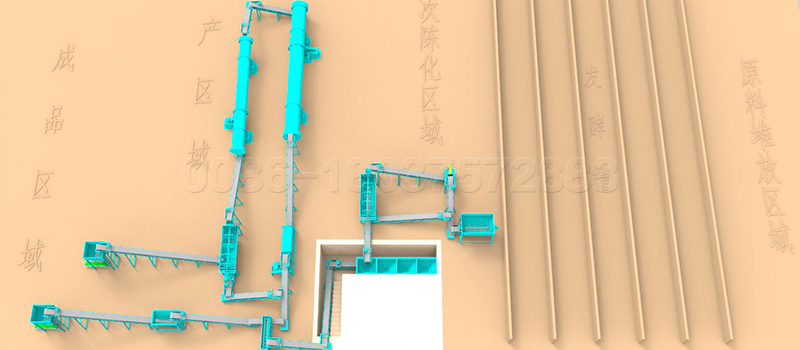
1. The pre fermentation and turning equipment mainly plays the role of composting and material turning, and is more suitable for microbial fermentation to store manure into fertilizer. The technology requires that the viscous storage manure can be effectively mixed with microbial preparation and straw powder. It can not only ferment fast, but also prevent the production of harmful odor gas in fermentation process, which meets the environmental protection requirements.
2. The special pulverizer for organic fertilizer is mainly used for better crushing and fermentation materials, which lays a solid foundation for the next scheme provider. When choosing organic fertilizer pulverizer, we must choose the suitable ones for their own use, and do not blindly. If selected, otherwise, the crushing effect will not be reached, but the normal operation of the next process will be affected.
3. Organic fertilizer mixer is used for mixing formula fertilizer, adding various substances, mixing evenly, and carrying out the next process.
4. The granulator of organic fertilizer mainly plays a role in granulation. The mixed material is uniformly fed into the granulator by conveyor for deep granulation. It can be made into various sizes and shapes according to the local market. There are many kinds of granulator styles and models, and the appropriate granulator can be selected according to the production and requirements of customers.
5. The dryer mainly acts as evaporation material moisture. Because of the large water content in the granulation process of fertilizer granulator, it can not meet the national requirements. The granulation can not be packed immediately, and the moisture should be dried by drying equipment. Evaporation to the state of national standards for the next process.
6. cooling machine. Because the temperature of the dried material is high, it can not be packed immediately, and the woven bag is easy to be burned. The temperature of material needs to be reduced to constant temperature quickly through cooler to carry out the next process.
7. The screen separator mainly plays a role of grading. Because of the granulator granulation rate, the difference of dryer and cooling opportunity, and the particle damage, it is necessary to distinguish the finished particles from the inferior products. After the next procedure, the defective products will be re comminuted and the granulation cycle work will be carried out.
8. Automatic packaging machine mainly plays the role of finished product particles, automatic.
Organic Fertilizer Production Technology and Machine Configurations
I said that we have a professional organic fertilizer production line to help us make organic fertilizer.
The basic process includes fermentation process, complex process and granulation process.The most important part is the granulation process.
Granulation process section
(1) Crusher (fertilizer crusher)
The materials were crushed and fermented for 1 day, then dried, crushed and screened for fermented organic materials.
For raw materials pre-treatment, go to https://fertilizerplantequiment.com/vertical-fertilizer-crusher/
(2) Compounds and mixtures (fertilizer mixers)
In the process of making a series of special fertilizers, inorganic nutrients and minerals should be added according to different soil conditions and different crops. These minerals are concentrated in organic matter and trace elements, so that the fertilizer contains various nutrients needed for plant growth, such as nitrogen, Phosphorus, potassium, sodium, manganese, zinc, copper, etc.
According to the formula, nitrogen, phosphorus, potassium and fermentation material are mixed by computer and transferred to granulator for granulation. We mix organic and inorganic materials according to different series of products, and mix them well in blender. Assume that the proportion of organic materials is 12%, about 12 tons.
In this process, composting turner is the most important machines. How choose a quality compost turner? Go to https://fertilizerplantequiment.com/compost-windrow-turner-for-sale/
(3) Pelletizing (fertilizer granulator)
The production process should not be exposed to high temperature and other characteristics due to the poor formation conditions of bio fertilizer mainly composed of organic matter and cellulose and the viable bacterial population with the function of making fertilizer.
Disc granulation and drum granulation are not suitable for building materials, because these two technologies require fine grinding of raw materials, high moisture content of granulation, and generally the moisture content is about 30%, so the load is relatively large. There are different types of fertilizer granulators for your fertilizer granulation process.
For drying, the loss of effective bacteria is great, and the pelleting rate is low (about 60% – 70%), the dust is heavy, and the operating environment in the production process is poor.

Therefore, through the extrusion environment, the requirements of raw material crushing are low, the molding rate is high (more than 95%), the water content of formed particles is low, the drying load is low, the environment is dry, and the production of organic biological functions should be better. Can reduce the loss of effective bacteria, less dust and good working environment.
70 tons of organic fertilizer raw materials, using organic fertilizer special granulator. After granulation, the material is sent to the dryer by belt conveyor for drying. The particle size is 3.0-4.0 mm, and the granulation rate is more than 70%.
The recommended pelletizer is a new type of pelletizer for organic fertilizer.
(4) Drying (fertilizer dryer)
In the production process of biological fertilizer, not only does the moisture content of granules generally exceed the index after molding and need low-temperature drying, but also the moisture content of organic matter after fermentation is about 30% – 40%, and the granule after granulation is generally between 15% – 20%, which needs drying treatment, because the moisture content of fertilizer quality index is less than 14%.
The drying stage is an essential and important process in the production of biological fertilizer, which directly affects the yield, quality and energy consumption. It is very important to choose the type and specification of dryer and control the process conditions.
In order to avoid the death of effective living bacteria due to the high temperature in the drying process, the drying temperature of materials should not be higher than 60 ℃ (usually about 50 ℃). Therefore, the temperature of hot air in contact with materials should be different.
For the moisture content of different materials, generally not more than 130 ℃, it is better to control the hot air temperature by stages, which can not only improve the thermal efficiency, but also effectively avoid the death of living bacteria.
According to these characteristics, the belt dryer is suitable, because it is suitable for low temperature and low humidity drying, and it can control the temperature of hot air in sections to ensure that the material temperature is not higher than the drying temperature, and maintain the highest temperature in the whole process.
The tail of the dryer can also add natural air cooling part, and cool the material immediately after drying, It can be used many times.
It is very suitable for granular biological fertilizer, with drying permeability, stable and uniform drying of materials, no damage to particles, adjustable residence time and feeding speed to achieve the best drying effect, because most of the thermal circulating air has high thermal efficiency, and the heat source can be used.
There is a secondary granulation area in front of the steam dryer provided by the biogas boiler, The material can be granulated there. Then, the material is lifted up through the plate to be completely dried. The exhaust machine exhausts the humid hot air through the pipe at the end of the dryer, and the air enters the precipitation chamber for precipitation.
After precipitation, the tail gas is removed by the washing tower, and the ejected water is pumped out for recycling. After secondary dust removal, the waste gas is discharged into the atmosphere through the chimney.
(5) Cooling (drum cooler)
The dry material is cooled by belt conveyor and sent to cooler. The cooling process mainly includes using fan to send natural air to cooler through pipe to cool the material.
The wind direction in the cooler is counter current. The waste gas pumped into the settling chamber by fans and pipes is treated and discharged into the atmosphere as dry waste gas
After cooling, the material is screened, the crushed large particle material and the screened powder are transported to the granulator through the return belt for granulation, and the final product is packaged in the automatic packaging system.
More details go to https://fertilizerplantequiment.com/organic-fertilizer-manufacturing-plant/
How to kill pests in organic fertilizer production process from animal manure?
The main raw material for organic fertilizer production is animal manure. There are many untreated or improperly treated pests in animal manure, such as treated, worms and so on. These pests breed and cause damage to vegetables, grains, fruits and so on.
Crops are good organic fertilizers. But we often find that when using crops, fertilizer sometimes leads to a large number of soil diseases and insect pests, And it increases year by year. I have been doing tests for several years and achieved good results. Now I have become a common element in fertilizer treatment to be faithful to agriculture.
1. Flatten poultry feces, dry in the sun, mash fine powder, and mix 1 kg of thiophene per cubic meter. After the round table is piled up, mix evenly and smear with flat mud for 15-20 days.
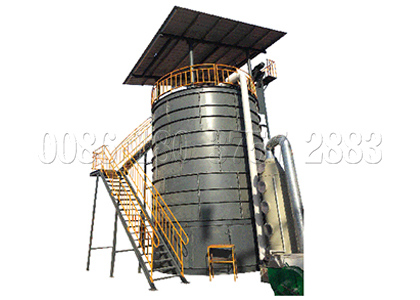
2. Mix fresh cow dung and sheep ash with 30% ash, then spread to 10 cm thick and spray 1 kg liquid per square meter. Liquid preparation: water 1605, carbendazim ratio 100:0.2:0.3.
Referer url, go to https://organicfertilizermachines.com/
3. When exposed to the sun, half human manure should be piled into a truncated cone of 50cm in the shape of a high platform, with flat mud paste, and several drugs on the top of the cork should be used to penetrate the hole, with the depth of 40cm, and then filled with liquid.
Liquid preparation: the ratio of water to trichlorfon was 100:0.5.
The first step of our organic fertilizer production line is fermentation composting, which is a process of killing pests. You can learn about the fermentation mode and site construction method of organic fertilizer. We have several fermentation composting turnover machines that can be selected according to our actual needs.
4 Characteristics of organic fertilizer production line
1. Semi wet material crusher is adopted, which has strong adaptability to
moisture content.
2. The polishing machine can make spherical particles with uniform size, smooth surface and high strength. Suitable for connection with various granulators.
3. Use belt conveyor and other supporting equipment to connect the whole production line.
4. Compact structure, stable performance, easy operation and maintenance.
5. According to your actual needs, the equipment is optional.
For the construction of customers, we can provide free construction drawings. Welcome to contact us!
More detailes info, type here
7 ways to make organic fertilizer
Organic fertilizer granulation production line is to use chicken, sheep, pig manure as the main raw materials, add a certain amount of nitrogen fertilizer, phosphorus fertilizer, potassium fertilizer, magnesium sulfate, ferrous sulfate and other substances, with rice bran, yeast fermentation, soybean meal and sugar in a certain period of time as a kind of biological bacteria, in the role of sulfuric acid, mixed fermentation equipment to make biological fertilizer.

Process flow of complete set of equipment for biological fertilizer production:
1. Fermentation: collect poultry feces and urine, mix with hay and rotten silage to make compost, and then ferment. In the fermentation process, the cow dung is completely fermented by the stacker, which can only be achieved by stacking in time and evenly.
2. Raw material comminution and mixing: use the raw material bin to mix composting materials, N, P, K and other inorganic fertilizers, other additives and other raw materials, and pass through the pulverizer and horizontal mixer in proportion. Mix.
3. Pelletizing: use a new type of organic fertilizer drum pelletizer to pelletize materials.
4. Screening and material return system: the granular materials output from the granulation system have different particle sizes and need to be screened and classified.
5. Drying: use the organic fertilizer dryer to further remove the moisture in the sieved particles, so as to meet the standard requirements of the moisture content of organic fertilizer.
6. Cooling: cooler is used to cool granular materials, which is helpful for the storage and quality of particles.
7. Packaging: the granular materials cooled by the organic fertilizer equipment are transported to the finished product warehouse by bucket elevator. Granular materials can be weighed quantitatively and packed by automatic packing scale
A complete set of organic fertilizer granulation production line process: raw material selection, drying and sterilization, fermentation, crushing, stirring, granulation, drying, cooling, coating, screening, metering and sealing, product storage.
The complete set of fertilizer production equipment is mainly composed of fermentation system, drying system, deodorization and dust removal system, crushing system, batching system, mixing system, granulation system and finished product packaging system. The fermentation system includes: feed conveying, which is composed of machine, biological deodorant, mixer, special car polishing machine, oxygen supply system and automatic control system.

